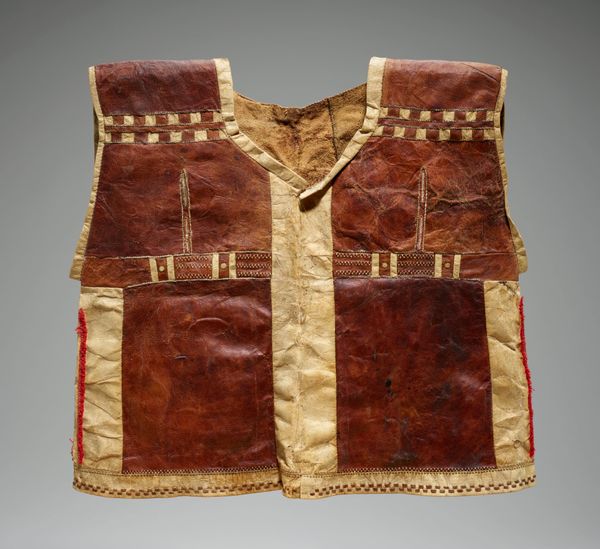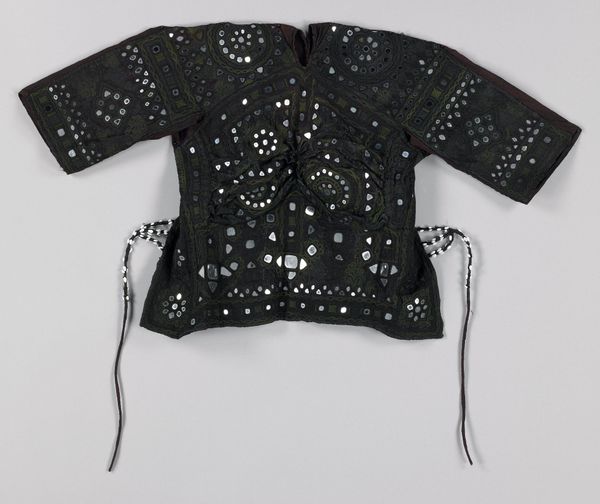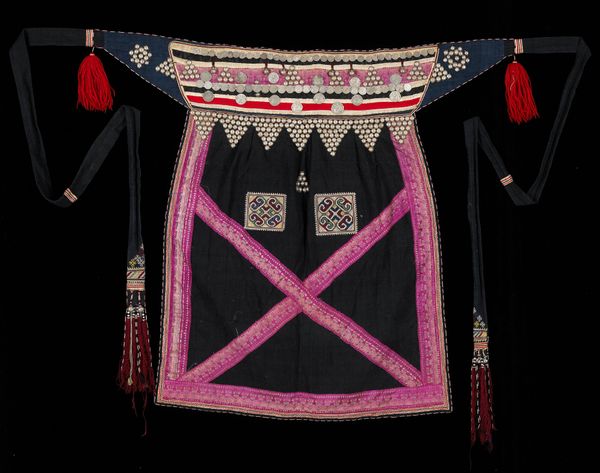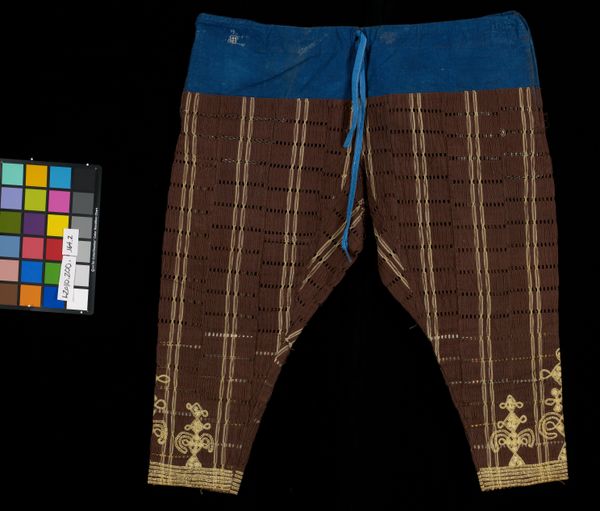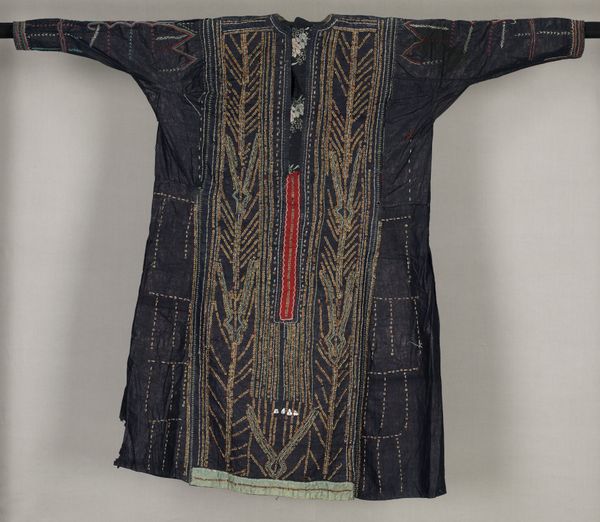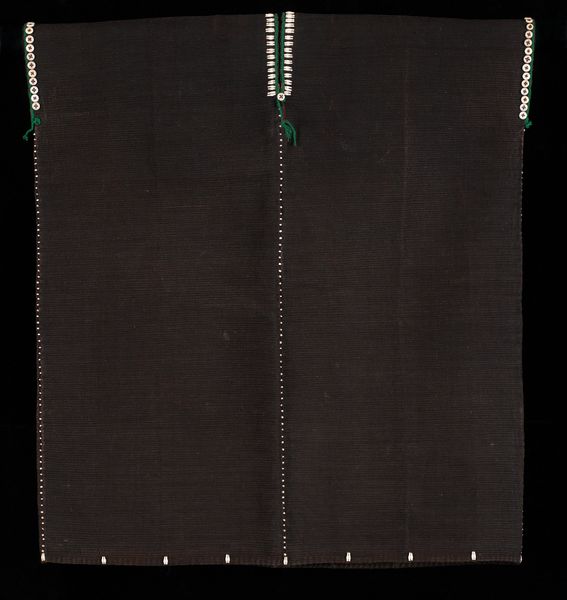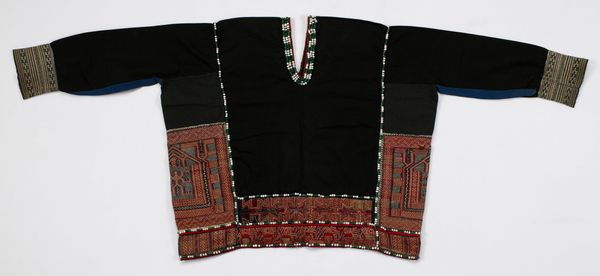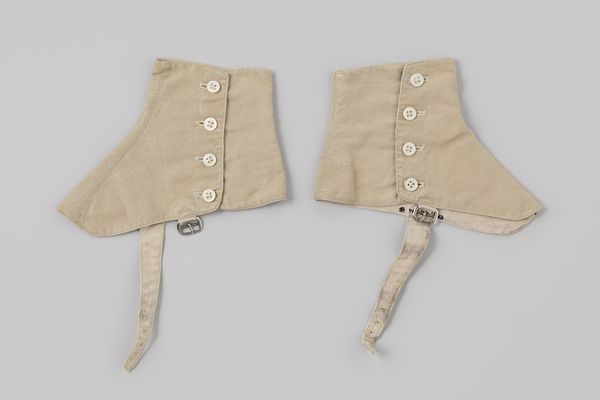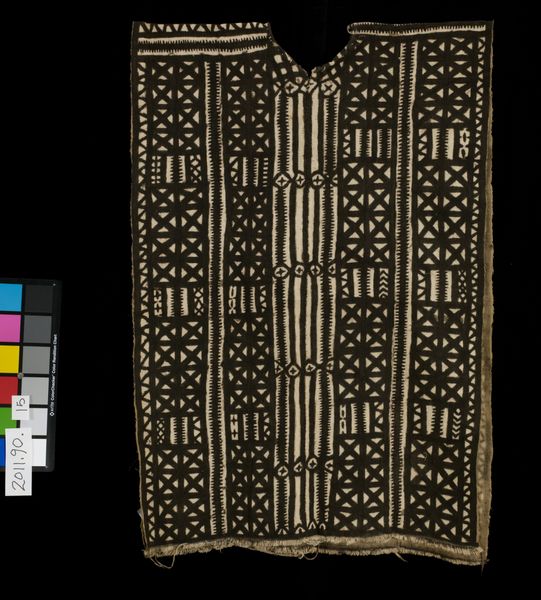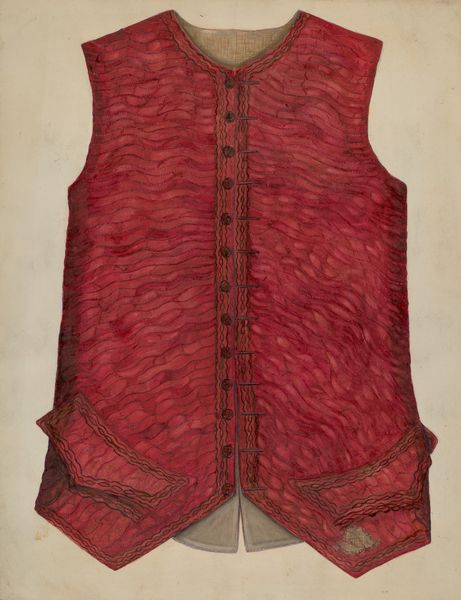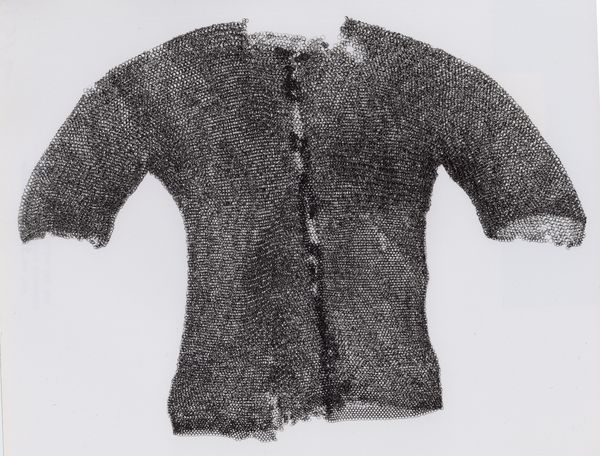
fibre-art, textile
#
african-art
#
fibre-art
#
textile
#
dark composition
#
dark colour palette
#
line
Dimensions: 27 3/4 x 27 1/2 in. (70.49 x 69.85 cm) (excluding fringe)
Copyright: Public Domain
Curator: What strikes me about this piece is the somber dignity of the dark cloth punctuated by the almost rhythmic repetition of silver-colored ornamentation. It’s quite powerful. Editor: Indeed. We’re looking at a Dogon tunic from around the 20th century, currently held at the Minneapolis Institute of Art. It's made using mixed media, specifically cotton and various fiber art techniques. The weaving itself speaks volumes. Curator: Absolutely. Dogon textiles like this were so central to defining status and identity. The dark color, often indigo-dyed, signified power and prestige within their society. Only men of a certain standing would wear tunics with this level of embellishment. Editor: Precisely. And consider the labor involved! Cultivating cotton, spinning it into thread, weaving the cloth, applying the dyes… each step demands skilled work. The geometric patterns, lines, and repeated motifs - were they also woven in, or are they applied separately? Curator: A close look suggests a combination. Some elements appear integrated into the weave, while others seem added afterward. Each symbol had a meaning connected to Dogon cosmology and social order, often communicating lineage, profession, or spiritual affiliation. The craftsmanship reflects societal values, and acts almost like a visual declaration. Editor: So, a woven language almost. I wonder about the distribution chains, were these always produced locally, or were some materials acquired through trade networks? And how did the makers themselves see their role within their society – as artists, craftspeople, or something else entirely? Curator: Those are critical questions. From a historical perspective, the presence of trade beads or European manufactured cloth can tell us a lot about evolving trade relations. Dogon weavers, while creating functional garments, undoubtedly saw themselves as deeply connected to the spiritual significance of their work, bridging art and societal norms. Editor: The stark contrast between the cloth and decorations – it hints at deeper significance than mere adornment, as you indicated. Curator: Exactly, the contrast catches your eye, and reminds us how cloth transcends the purely practical, taking on cultural importance, wealth and social communication. Editor: Studying the construction gives us insights to production, consumption, and social values that challenge art categorization, urging a more nuanced way of engaging. Curator: A vital piece bridging cultural insight and material skill. Thank you for taking us to see beyond appearance.
Comments
No comments
Be the first to comment and join the conversation on the ultimate creative platform.

